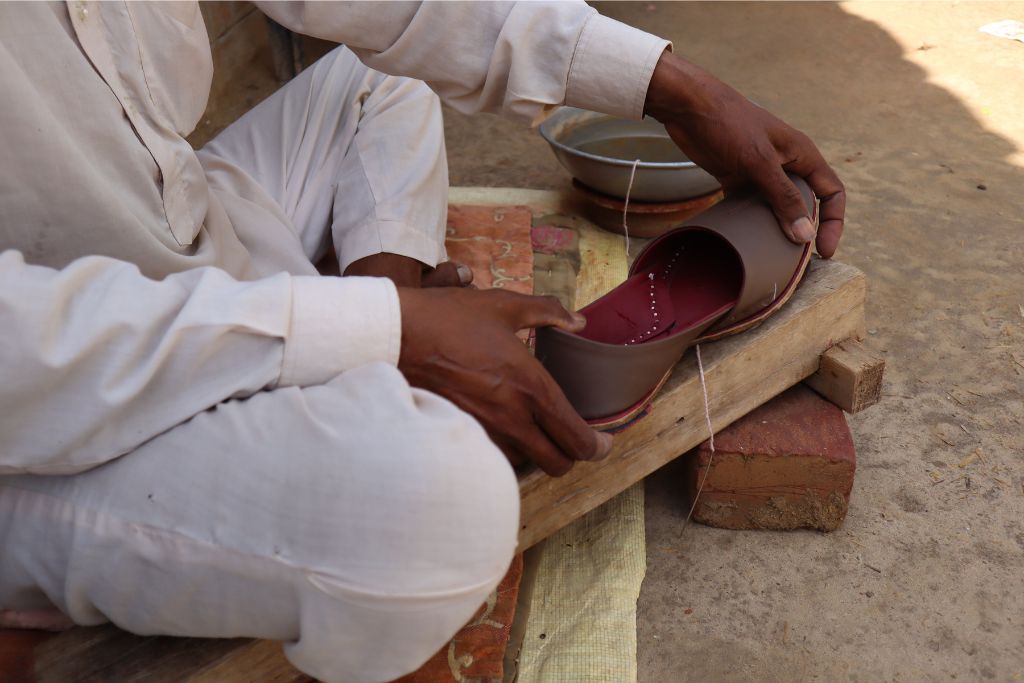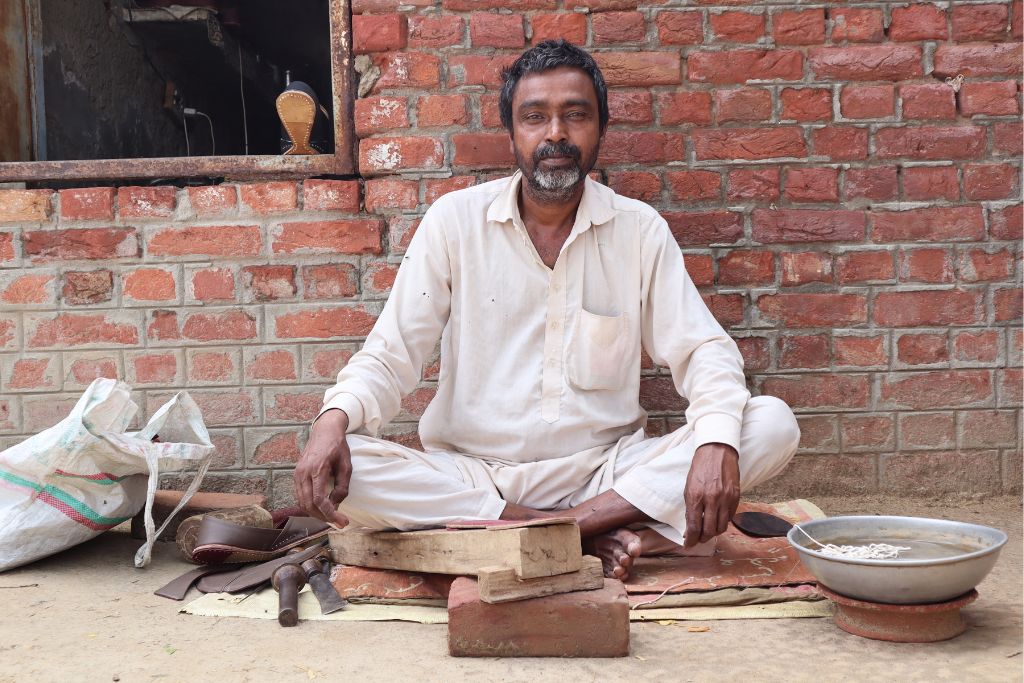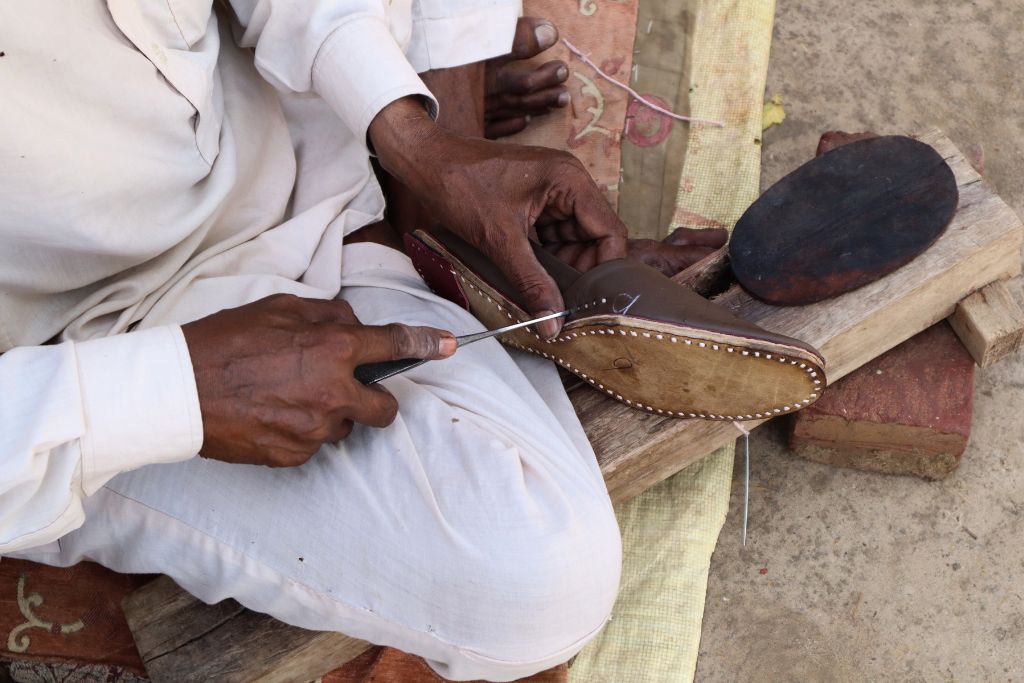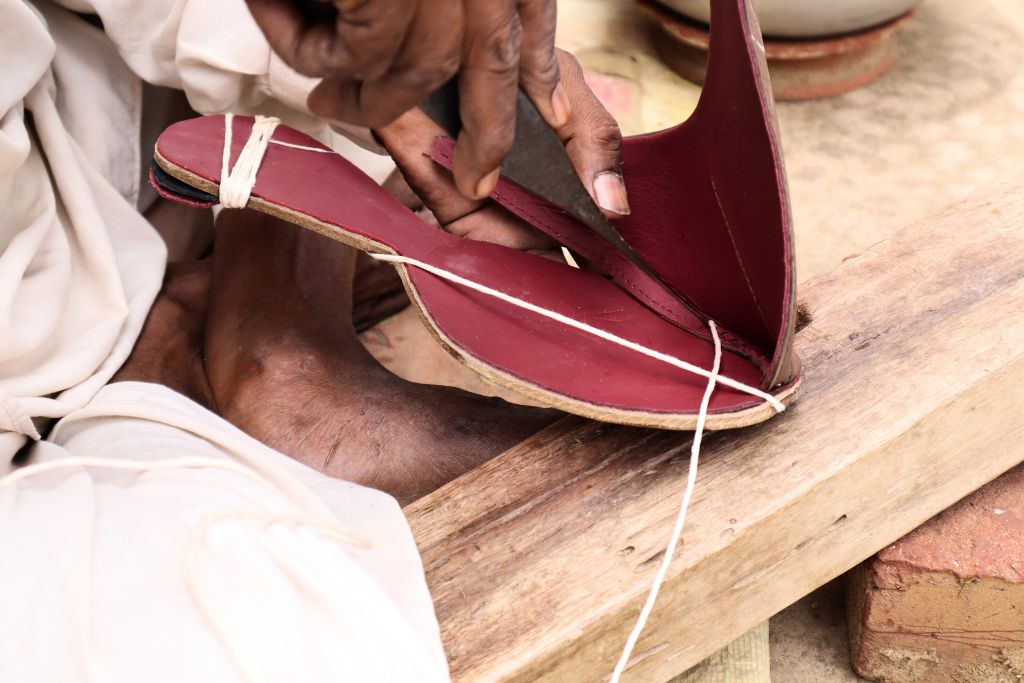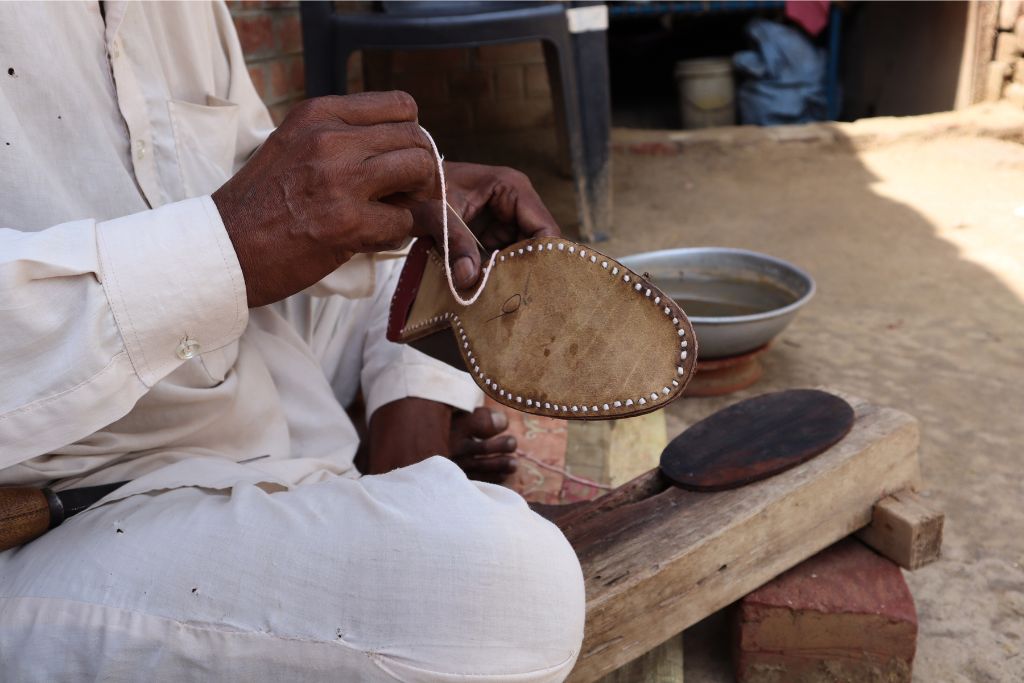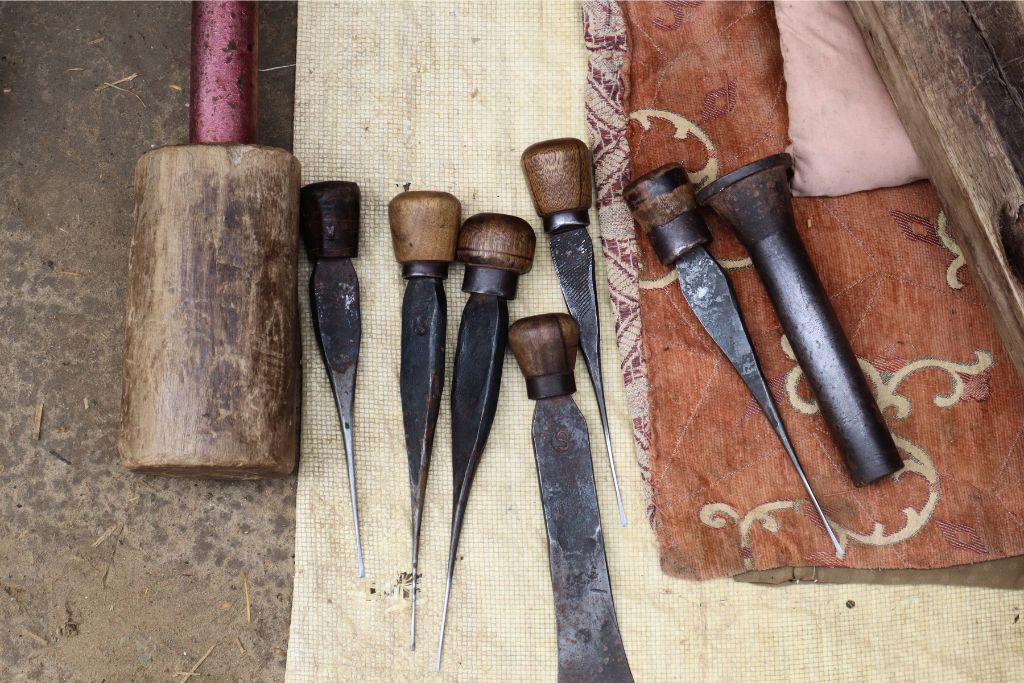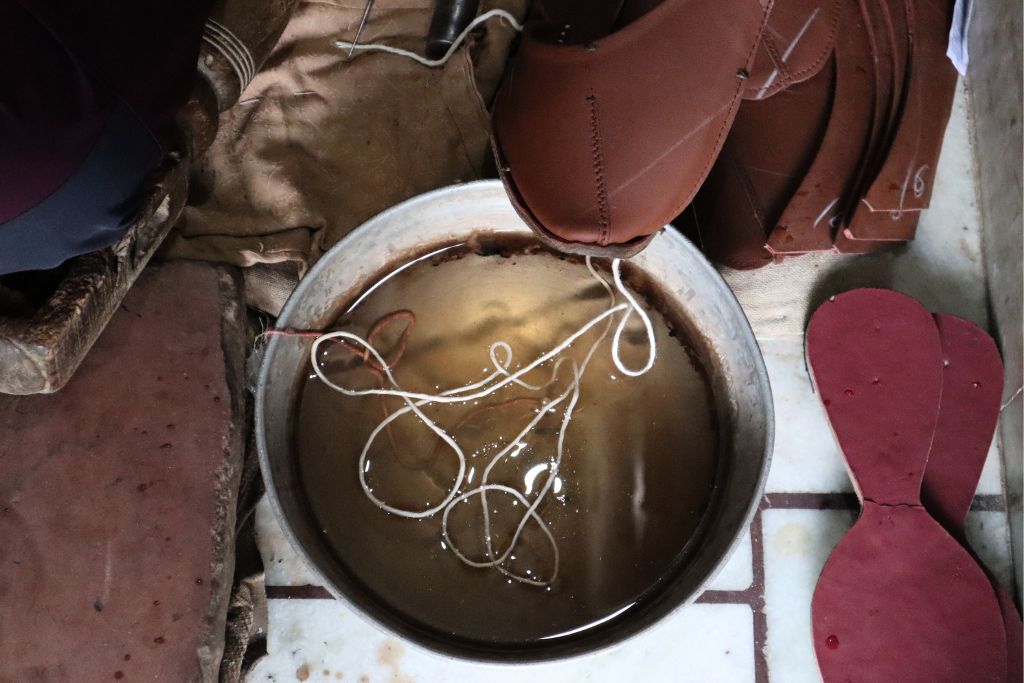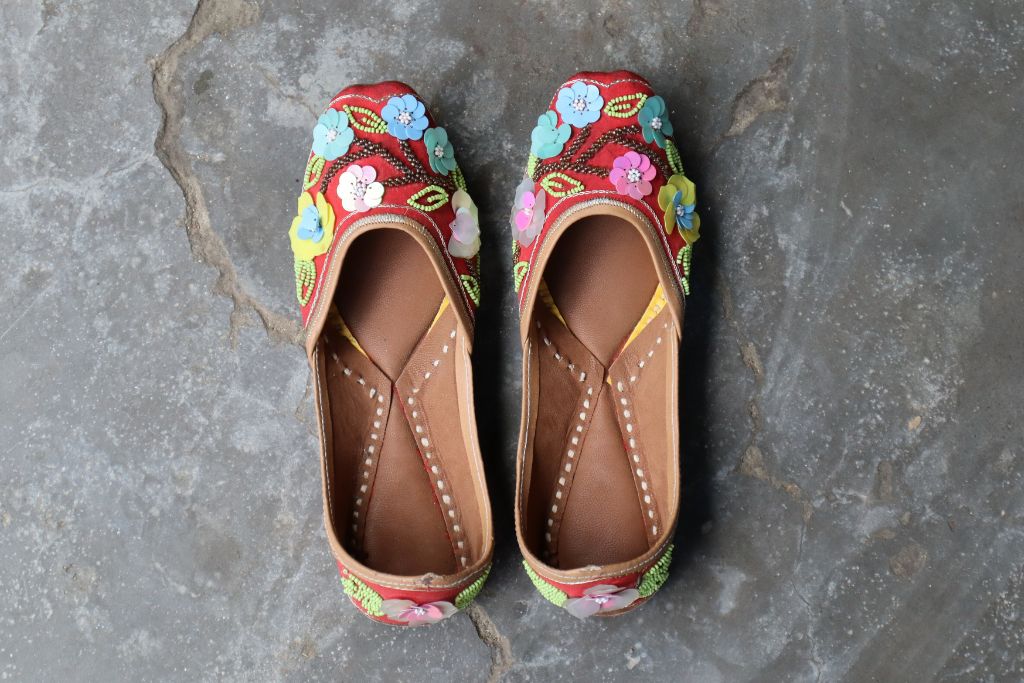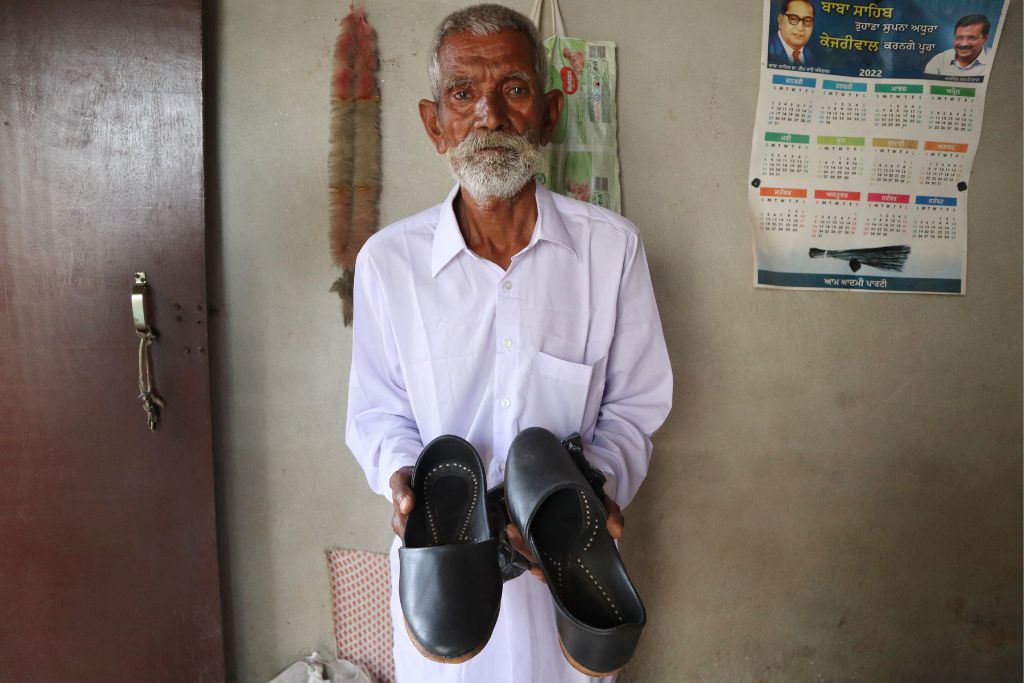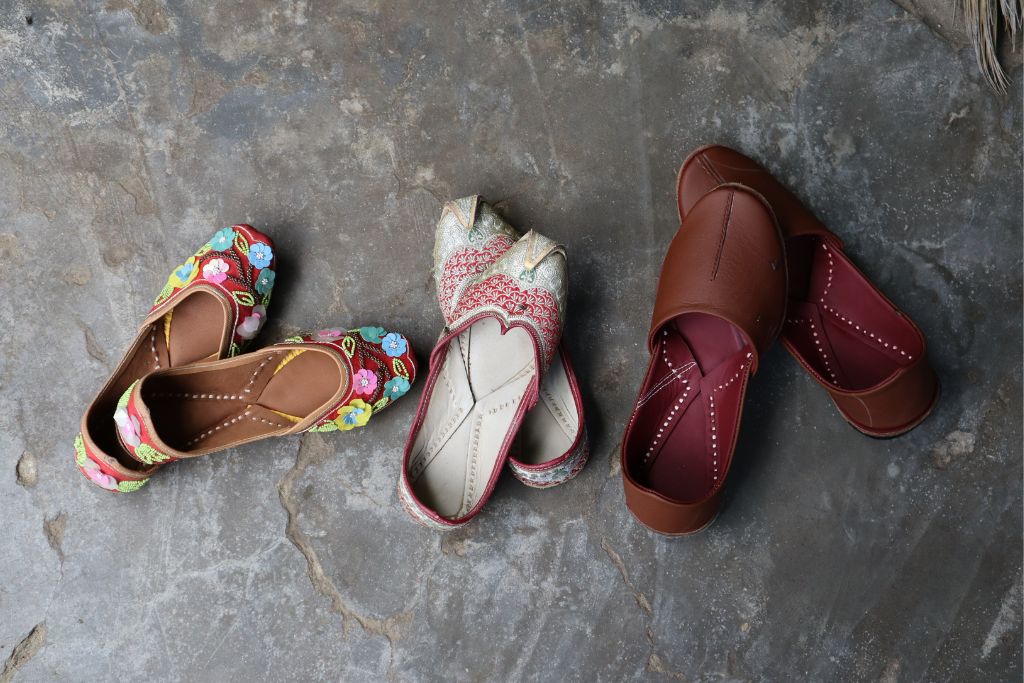
Making of Punjabi Jutti
Punjab is well known for its juttis – footwear made of leather. In the southern region of the state, called Malwa, districts such as Patiala, Fazilka and Sri Muktsar Sahib are among the manufacturers of the footwear – the last one being the most famous.
The praise for Punjabi juttis made in Sri Muktsar Sahib could be found in old Punjabi couplets.
“Lai de ve jutti mainu, Muktsari kadai wali,
Pairan wich mere channa, jachugi payi bahali’’
(Buy me a jutti, the one with Muktsar’s embroidery. In my feet, oh my beloved, it will look amazing.)
According to one study, ‘Dalit occupation of Punjabi-jutti makers’ by the Guru Nanak College of Girls in Sri Muktsar Sahib district, the art of making leather footwear was brought to Muktsar by migrants from Rajasthan in the 1950s. A Punjabi jutti maker, Jaswant Ram’s family was among the many migrants. They came from the border villages of Haryana and Rajasthan.
The shoe-making skill using leather has traditionally belonged to the Dalit community of Ramdasi Chamars. For ages, making Punjabi juttis has been a source of income in the state for them. Where a simple pair of Punjabi juttis are generally priced between Rs 450 to Rs 500 in the markets, an artisan gets Rs 80 for his labour.
To make a jutti, raw leather is washed and rubbed with mustard oil. Then artisans cut them into different shapes and sizes depending on how they want to style. But now most artisans get the pieces of leather from their employers themselves. Most basics of the parts they get are of the upper half and sole.
The artisan then ties the leather pieces together with a thick cotton thread. Over 200 ties in total. It takes about 35 minutes to finish one jutti. Nearly 2 hours to finish a pair. In a day, an artisan shapes up to four pairs of Punjabi juttis, starting as early as 5.30 am and finishing as late as 10 pm.
Also Read | Chamarkhani shoemakers persist through declining demand
All artisans sit with their set of sharp tools next to them. These tools are used to pierce through the leather pieces while tying the two halves of the shoes: upper and sole, cut the cotton thread and hammer the leather pieces to a proper shape.
A bowl full of water is also kept near while shaping the shoe. The thick cotton thread is dipped now and then in this water bowl to keep it soft. This step is important because only soft thread will pierce through the leather and tie the pieces together.
Women involved in this work hand embroider the jutti. They decorated it with beads, pearls, small mirrors, shells etc. But most women’s work has now been replaced by machines, said shoemaker Santram.
Once done, the juttis are then handed over to employers in small towns for sale. Some like Munshi Ram, in his 70s, sell directly to customers in his village Khunan Khurd in Sri Muktsar Sahib district of Punjab.
All photos have been clicked and shared by Sanskriti Talwar.
Sanskriti Talwar is an independent journalist who writes about gender, human rights and sustainability. She is Rural Media Fellow 2022 at Youth Hub, Village Square.
